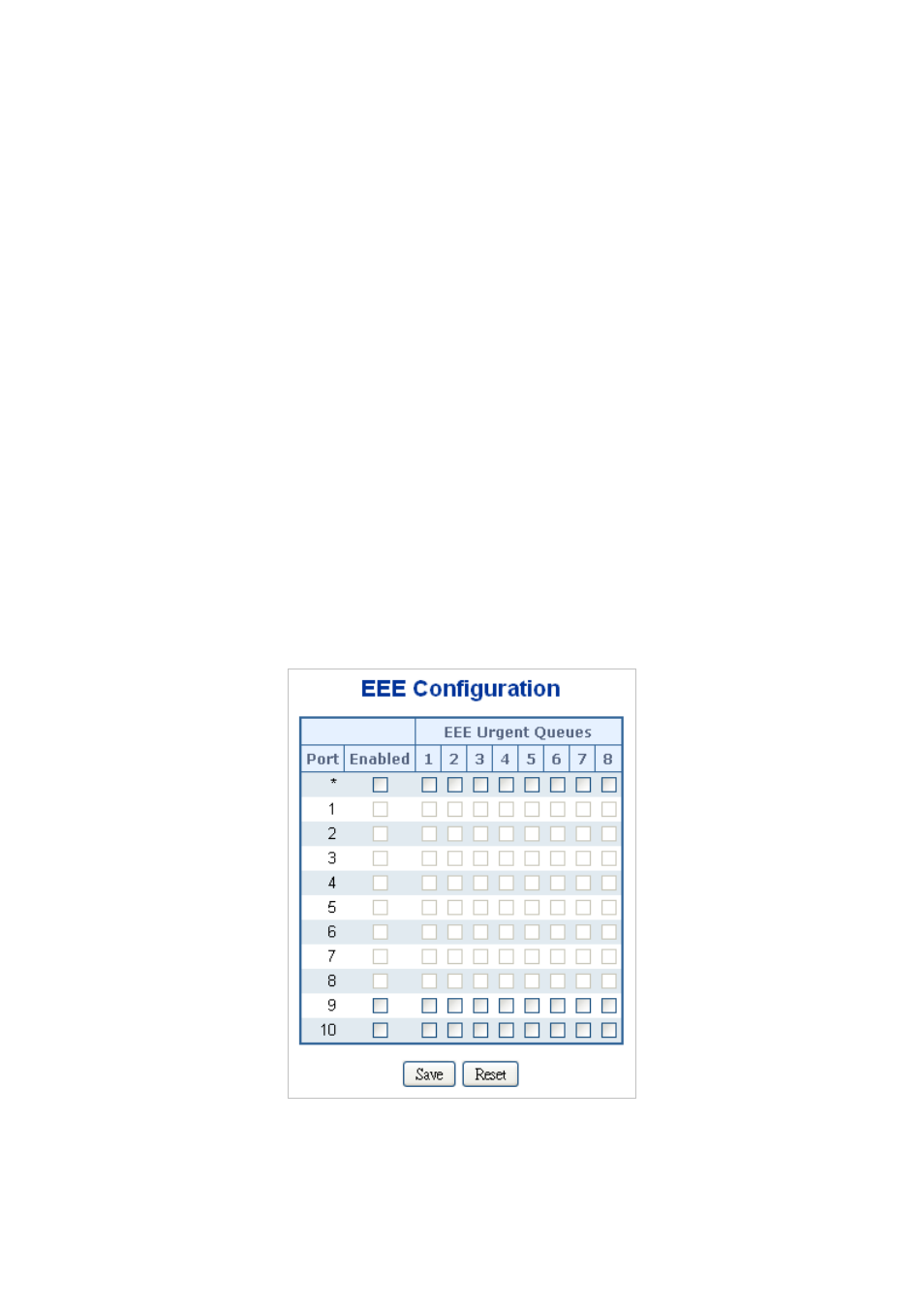19 eee power reduction – PLANET MGSD-10080F User Manual
Page 87

User’s Manual of MGSD-10080F
87
4.2.19 EEE Power Reduction
This page allows the user to configure the currenport settings.
is a power saving option that reduces the power usage when there is low or no traffic utilization.
EEE works by powering down circuits when there is no traffic. When a port gets data to be transmitted all circuits are powered
up. The time it takes to power up the circuits is named wakeup time. The default wakeup time is 17 us for 1Gbit links and 30 us
for other link speeds. EEE devices must agree upon the value of the wakeup time in order to make sure that both the receiving
and transmitting device has all circuits powered up when traffic is transmitted. The devices can exchange wakeup time
information using thprotocol.
For maximizing power savings, the circuit isn't started as soon as data is ready for a port, but is instead queued until 3000 bytes
of data is ready to be transmitted. In case of delay, data less than 3000 bytes will be transmitted. Data is always transmitted
after 48 us, giving a maximum latency of 48 us + the wakeup time.
If desired it is possible to minimize the latency for specific frames by mapping the frames to a specific queue (done with QOS),
and then mark the queue as an urgent queue. When an urgent queue gets data transmitted, the circuits will be powered up at
once and the latency will be reduced to the wakeup time.
EEE works for ports in the auto-negotiation mode, where the port is negotiated to either 1G or 100Mbps full duplex mode.
The EEE Power Reduction Screen in
Figure 4-2-22
appears.
Figure 4-2-22: EEE Configuration Page Screenshot